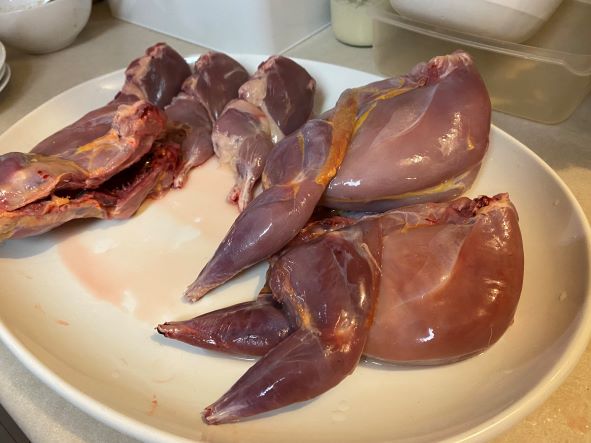Processing Poultry
Processing quail and pheasants involves many of the same steps as processing other poultry, such as chickens, turkeys, and ducks. Here is a general overview of the process:
-
Killing the bird: The first step in processing quail or pheasants is to kill the bird. This is typically done by breaking the neck or cutting the jugular vein. It is important to handle the birds humanely and to ensure that they are completely unconscious before proceeding with the processing.
-
Plucking the feathers: After the bird is killed, the next step is to remove the feathers. This can be done by hand or with a mechanical plucking machine. The feathers are removed to make it easier to handle the bird and to prepare the meat for cooking.
-
Eviscerating the bird: The next step is to eviscerate the bird, which involves removing the internal organs. This is typically done by making a small incision in the abdomen and carefully removing the organs. The organs are typically discarded, while the liver, heart, and gizzard may be saved for cooking.
-
Cutting the meat into portions: Once the bird is eviscerated, the next step is to cut the meat into portions. This may involve cutting the bird into pieces, such as breasts, legs, and wings, or it may involve deboning the meat and cutting it into smaller pieces.

-
Packaging the meat: The final step is to package the meat for storage or cooking. This may involve wrapping the meat in butcher paper or placing it in a vacuum-sealed bag. The packaged meat can then be stored in a refrigerator or freezer until it is ready to be cooked.
It is important to handle quail and pheasant meat carefully to ensure food safety. This may involve following proper food handling practices, such as washing your hands frequently and keeping the workspace clean. It is also important to properly store the meat to prevent spoilage.